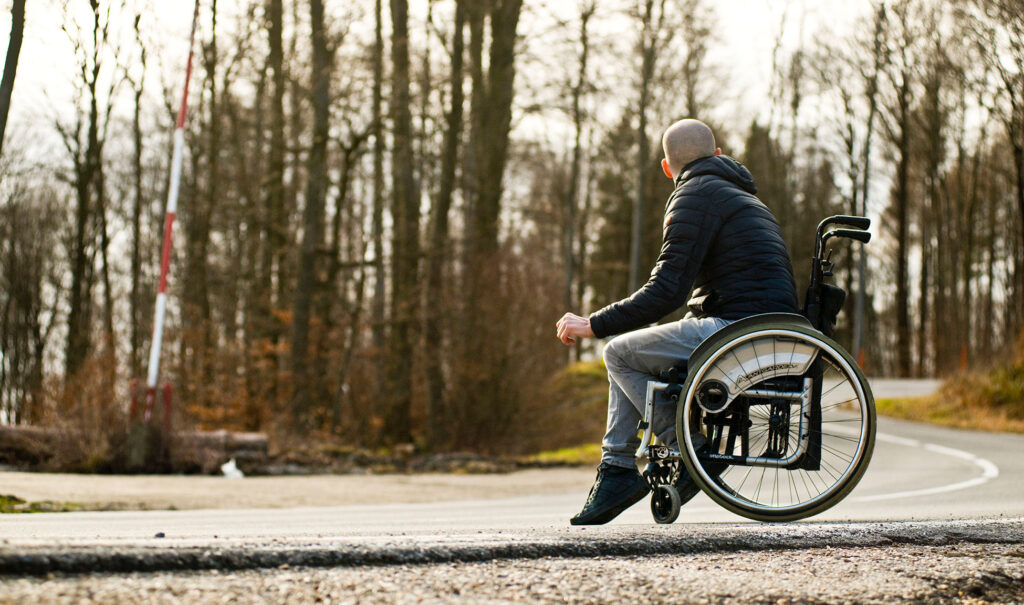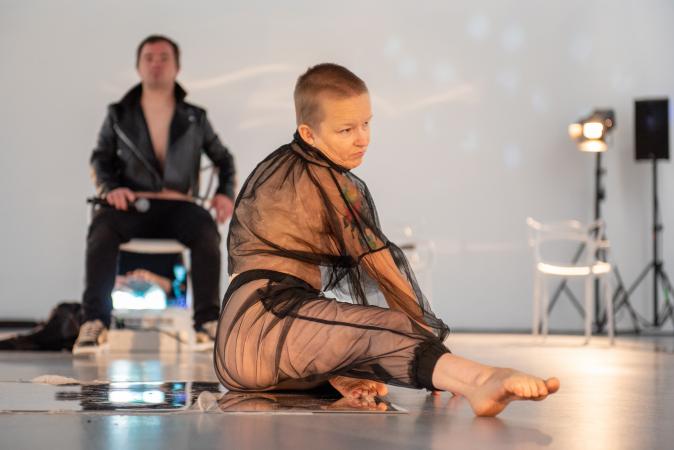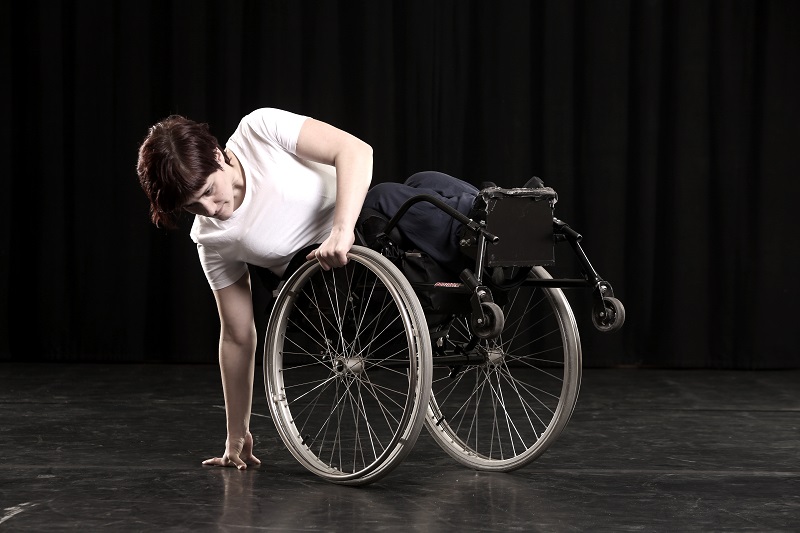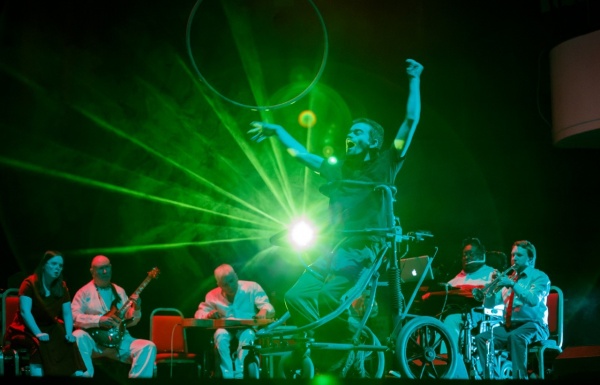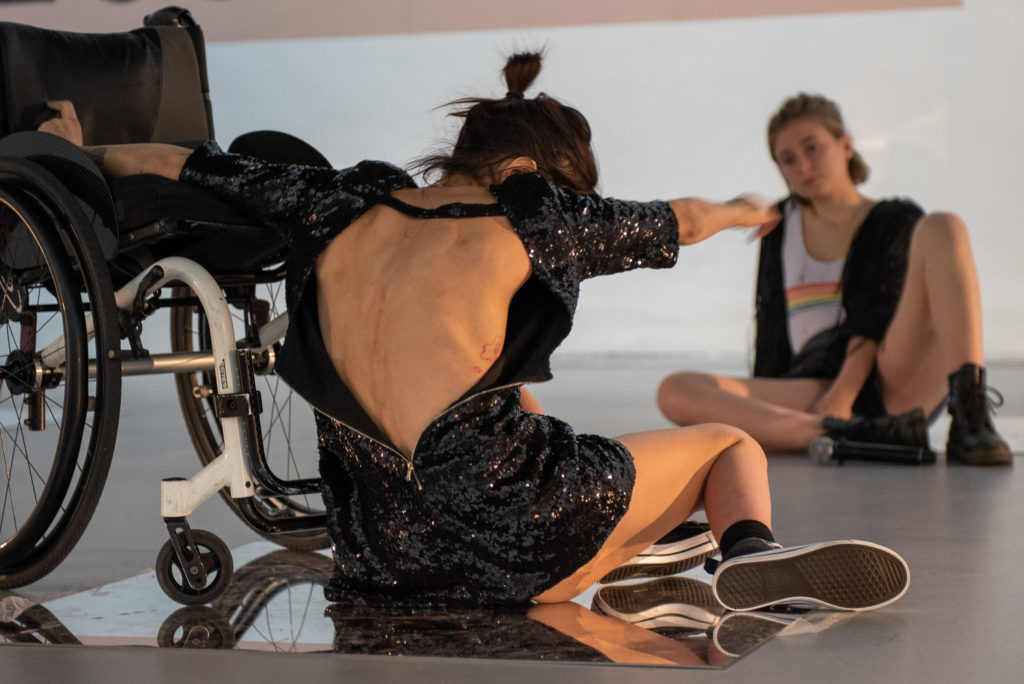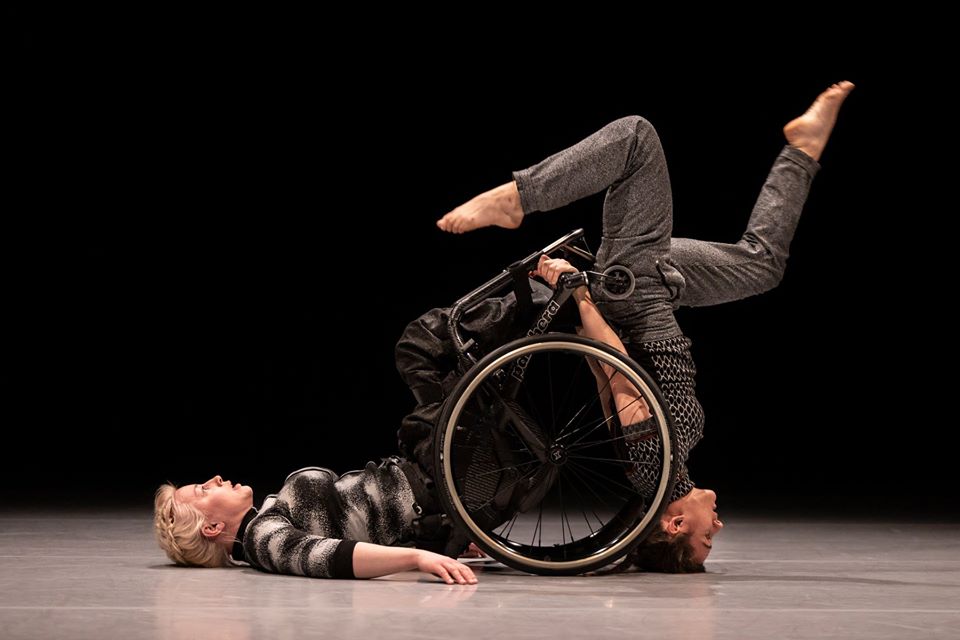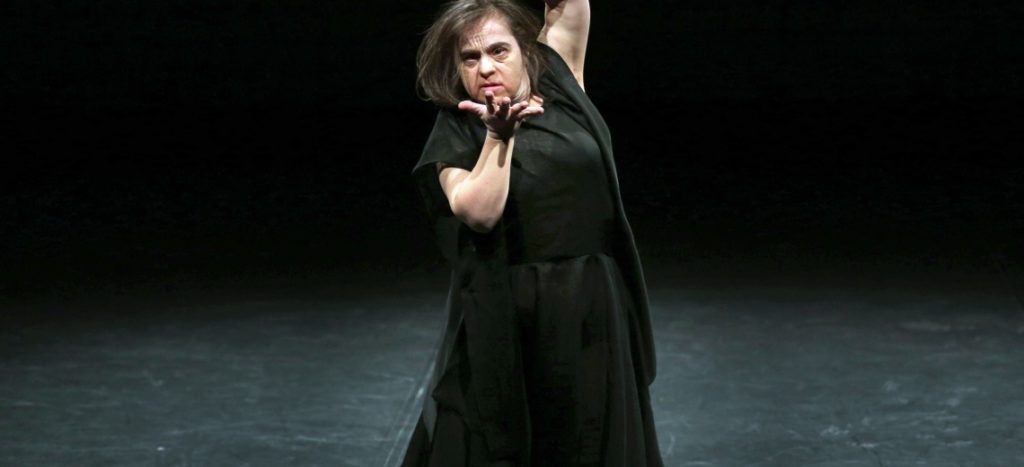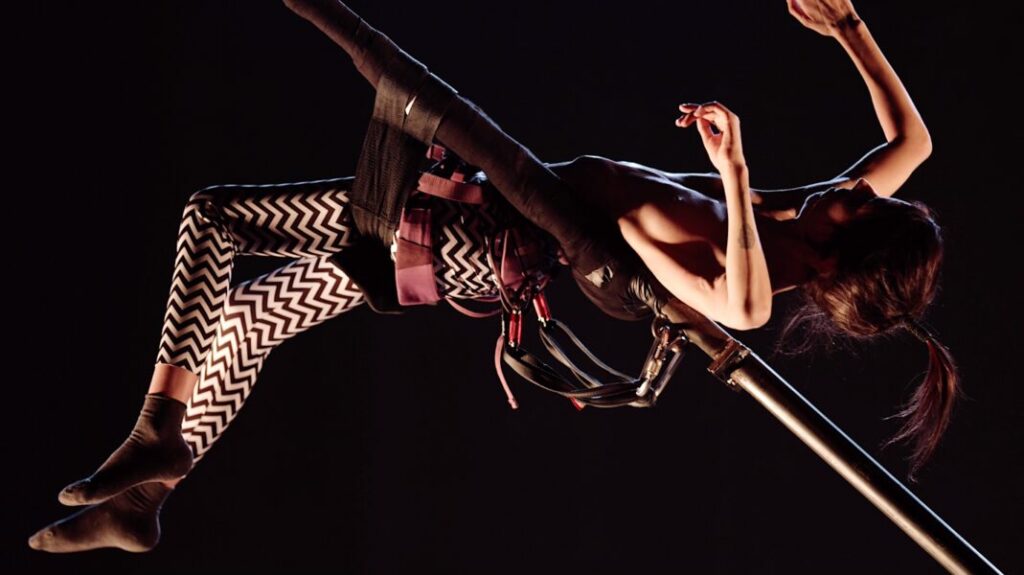
Funders and Policymakers
Welcome to the Europe Beyond Access “Learning Journey” aimed at cultural policymakers and arts funders. We hope these resources will support those people and institutions tasked with managing cultural policy and funding processes – whether at a municipal, regional, national or transnational level. By sharing and comparing practices, we hope that it is easier for you to reach the goal of equity for Deaf and disabled people as artists, as cultural workers and as audiences.
You will find brand new information made specifically for this toolkit; you will find conversations and provocations generated during the course of the five-year Europe Beyond Access project; and we have provided links to other important and interesting content produced by other organisations.
Our films are hosted on YouTube to allow you to benefit from captions and the YouTube auto-translation feature. We provide links to transcripts of the films and audio files to enable you to work with google translate and screen readers.
International Sign introduction
Curator’s Message
During the Europe Beyond Access project I have met and worked with many arts funders and policymakers (both politicians and officials) who actively want to contribute to greater access to the arts for Deaf and disabled people, and who want the arts sector to benefit from the ideas and innovations of disabled artists.
However, our Time To Act report has demonstrated that policymakers and arts funders feel even less confident in their knowledge levels on this topic than the majority of cultural managers
In addition, I have also been told, privately, that for some working in large institutions, and especially for those working in governmental institutions, there is often one sole colleague responsible for diversity and inclusion. Even where stated policy is for greater access to the arts, colleagues in arts funding institutions often feel isolated and feel that, even internally, change is an uphill struggle.
We hope, therefore, that by bringing together a number of conversations and tools, as well as by sharing what we think of as some best practice approaches, we can increase the knowledge levels amongst cultural funders. We also hope to show that across the world there are many cultural policymakers negotiating these questions, and it can only support us all if we find ways to share what we do.
Ben Evans, Curator of the Europe Beyond Access Funder & Policymaker Learning Journey
1. Disability in the arts: provocations by artists
Before looking at tools and contrasting approaches to funding and policymaking, we need to take a moment to review the context in which our cultural policies will sit. We also need to hear from those artists who are currently marginalised within the cultural sector. We start this Learning Journey with a few short provocations from disabled artists.
Caroline Bowditch powerfully considers the experience of Deaf and disabled people in society and the “ableism” inherent in the cultural sector. Caroline introduces us to the Social Model of Disability, and how thinking about disability from this perspective can support change in the cultural sector.
The Italian Association of disabled artists, Al.Di.Qua share with the world their manifesto for change – an invitation to see the world differently.
Artist and teacher, Kimberley Harvey shares her personal journey as an artist, exploring identity, but also asking the viewer to reflect on their own assumptions.
Caroline Bowditch, ‘Ableism in the Performing Arts’, transcript
Here is a link Al. Di. Qua’s manifesto with International Sign.
Kimberley Harvey, ‘What do you see when you look at me?’ transcript
2. Work by disabled artists contributing to art form innovation
We also need to think about why we as arts funders and policymakers are seeking to improve access to the cultural sector. Is it because we think we should – because we have good intentions and think it is the morally right thing to do? Is it because we must – due to national legislation or political pressure? Or, instead, perhaps we understand that the arts themselves gain when they open themselves to more diverse artistic practices? This third motivation is not a new argument, but is often overlooked. Certainly, our experience is that this artistic argument is more likely to influence our Artistic Directors, Programmers and Curators. After all, decades of good intentions have not created an accessible cultural ecosystem!
So, here we share some resources outlining the argument that diversity and disability equality enrich the arts for artists, audiences and our wider society. The reason arts organisations and the cultural sector should actively embrace diversity is because artistic diversity contributes to a richer and more innovative cultural sector. Without this, the arts themselves are impoverished.
The Importance of Disabled Artists in the Contemporary Dance Sector transcript
Contemporary Dance is an art form where disabled artists have been contributing to innovative practices for many years.
In this film, four leading disabled dance artists from across Europe, Artistide Rontini (IT), Diana Niepce (PT), Marc Brew (UK/AUS), and Katarzyna Żeglicka (PL) discuss their innovative approach to dance, in a Europe Beyond Access panel moderated by Freddie Opoku-Addaie, of Dance Umbrella – London’s international dance festival.
Lyn Gardner, ‘Arts, Disability and the Role of the Critic and Criticism’, transcript
In this short lecture one of the UK’s leading theatre critics, Lyn Gardner, talks about why she thinks the work of disabled artists is some of the most exciting and innovative work being made at the moment. Lyn talks not as a disabled person, but rather as a cultural commentator looking at the work of disabled artists within the wider cultural sector.
3. The Creative Case for Diversity in the Arts (Arts Council England)
The term “The Creative Case for Diversity” was coined in 2009 by England’s arts funding organisation, Arts Council England. The ideas contained therein were not necessarily new, but they were presented in a new way, and were being outlined by the main funding body for culture in England. If you wanted to be funded, you had to listen.
The Creative Case for Diversity sets out how diversity and equality can enrich the arts for artists, audiences and our wider society. The reason artists and organisations should actively embrace diversity (including diversity of sex, race, religion, sexuality, class, age and of course disability) was because that diversity contributes to a richer and more innovative cultural sector. The benefit to the arts themselves was highlighted.
Other, less progressive ways of thinking about diversity in the arts are perhaps more widely known and relied upon:
The moral case for diversity in the arts is something I anticipate is accepted by most people reading this, and by most people working in the cultural sector today: that it is morally right that disabled people have the same access to the arts as non-disabled people. If we believe that everyone should have the opportunity to benefit from the life-enriching role of art, then we extend that opportunity to disabled people. Art for all is a good thing.
Of course, the problem with the moral case is that generic principled feelings of what is right or what should happen is a very long way from any action. Cultural managers have managed for decades to somehow reconcile their belief in the principle of art for all whilst disregarding the almost 20% of the population who are disabled.
The legal case, in contrast, is framed within the legal rights of disabled people to have access to goods and services. Of course, these legal rights vary from legal jurisdiction to legal jurisdiction, with the Americans with Disabilities Act (1990) often being stated as an example of a robust legal instrument which has led to world-class access to cultural institutions and to National Parks and monuments.
As another example, in 1995 the UK government passed the Disability Discrimination Act. This decreed that employers and service providers were, for the first time, under a duty to make ‘reasonable adjustments’ to their workplaces and services to overcome barriers experienced by disabled people. Employers, shops, theatres and galleries could be taken to court by individuals who felt they were unfairly discriminated against. In the arts, this had a major impact in the funding decisions and contract agreements made by arts funders and other statutory bodies involved in supporting all arts organisations.
National laws differ of course, but more than 160 countries have signed and ratified the United Nations Convention on the Rights of Persons with Disabilities, authored in 2006 and including Article 30 of the Convention which relates to “Participation in cultural life, recreation, leisure and sport” – insisting on “the right of persons with disabilities to take part on an equal basis with others in cultural life.”
However, there is no doubt that in the majority of signatory nations day-to-day practice and law does not match the declared ambition of the convention to which governments have signed up. Thus, a different way or thinking about disability (and all diversity) in the arts is needed: and this is where the Creative Case for Diversity is so helpful.
The Creative Case for Diversity was developed as a way of proving to cultural professionals that the arts themselves are improved when a wider group of people contribute to them.
It is an argument grounded in cultural history – noting that the history of 20th Century cultural innovation is the history of artists outside of the mainstream and from a diverse set of backgrounds influencing and revolutionising the art establishment. Thus, we learn that 20th Century music was transformed by the development of Jazz in Harlem by marginalised African American musicians; or that the dance innovator George Balanchine was hugely influenced by his often-forgotten collaboration with the African American dancer – Arthur Mitchell.
But, it is also an argument which relates directly to the innovation and challenge to traditional art forms offered by disabled artists. Here is my own interpretation.
I believe that no serious contemporary dance promoter, interested in the way the human body moves and how it travels in space, can ignore those leading disabled dance artists who have non-normative bodies, and different ways of moving in space. When the dance artist, Claire Cunningham, talks about herself as a “Quadruped”, she disrupts our notions of what a body can do on stage.
I believe that presenters of Live Art or Performance Art will understand the profound and complex narratives at play during Noëmi Lakmaier’s durational performance, Cherophobia, in which her immobile body is attached to a growing number of helium balloons, until they number around 20,000 and lift her off the ground.
And it is clear that there is a symbiotic relationship between disabled musicians alongside developers of digital musical instruments designed to support access needs, with the popular music industry. Such as Kris Halpin’s use and re-purposing of the MiMu gloves.
These artists are not just making new works with interesting content which has never been seen before. They are challenging the art forms themselves. So much so that the acclaimed visual artist, Yinka Shonibare, describes Disability Arts as ‘The last remaining avant-garde movement’.
So, in the words of one of the authors of the Creative Case, Hassan Mahamdallie, “what is key about diversity is its unique ability to refresh, replenish and stimulate the arts. Diversity should not be regarded as a burden on the arts (or wider society), it should be seen as a motor for innovation and change.” (The Telegraph 13 September 2011).
Although promoters, producers and arts professionals around the world are unlikely to have heard the term “Creative Case for Diversity”, I do believe that there is a growing recognition of the current unique generation of Deaf and disabled artists who are making works of art that are challenging traditional art forms, who are making works of high quality, and who are demanding the cultural sector rethinks reactionary notions of artistic perfection: not despite of disability, but perhaps because of it.
Extensive resources regarding The Creative Case, including responses from the cultural sector can be found on Arts Council England’s website.
Here’s an introduction to just some of the artists who collaborated on Europe Beyond Access, and whose practices embody Creative Diversity.
4. European research and cultural policy recommendations
In a number of countries (including England, Scotland, Ireland, Norway, & Canada) research into the lack of access to the cultural sector for Deaf and disabled people has been hugely impactful. Not only has this evidence of the reduced cultural opportunities for disabled people often acted as a baseline for policies aimed at improving the situation, but the often shocking results have also helped gather greater political and public consensus about the need for change.
However, in the majority of countries this data does not exist.
Through Europe Beyond Access we have commissioned some valuable and unqiue research shedding light on the extent of cultural exclusion of disabled people. We have also helped found the European Arts & Disability Cluster – a platform for advocacy by organisations focussing on enabling the work of disabled artists, with the aim of influencing structural change an a national and transnational level.
Time to Act: How lack of knowledge in the cultural sector creates barriers for disabled artists and audiences was published in December 2021. It is a research report authored by On The Move, and commissioned by the British Council in the context of Europe Beyond Access.
Spanning 42 countries, Time To Act provides the first transnational evidence that lack of knowledge in the mainstream cultural sector is a key barrier preventing disabled artists and arts professionals participating equally in European culture.
Time To Act: Two Years On was published in May 2023. A follow up to Time To Act, this new report reveals data-led insights into the accessibility, inclusion, international mobility and professional development of disabled artists in the European performing arts sector, as well as the progress made over the past few years. The report combines a regional focus, covering all the countries participating in the Creative Europe programme (as well as Switzerland the UK), with more detailed analyses of the progress made in three of the countries where Europe Beyond Access has operated – namely, Italy, Poland, and Sweden.
‘Disabled artists in the mainstream: a new cultural agenda for Europe’ emerged from the founding of the European Arts & Disability Cluster. The cluster represents dozens of organisations across Europe (in 19 European countries), all of which work towards greater accessibility and disability representation in the arts.
In a paper aimed primarily at the institutions of the European Union, the Cluster made demands that are relevant also to national and regional cultural policy makers: with policy recommendations, and practical recommendations for funding programmes.
5. Funding bodies generating change
Here we share some of the approaches and tools used by different national and regional arts funders in the making of the Arts more diverse and more accessible. We also share with you some of the exchanges between national policymakers – exploring how different countries are approaching change in different ways.
Three national policy makers from Sweden Italy and the UK discuss the role that arts funders and policymakers can play in developing a more inclusive arts scene. With Kasja Ravin (General Director, Swedish Arts Council); Abid Hussain (Director Diversity, Arts Council England); Donatella Ferrante (Consultant, Directorate General for Performing Arts, Ministry of Culture, Italy).
This online lecture was organised by Europe Beyond Access in partnership with the United Inclusion project of Un-Label, and the Kulturpolitische Gesellschaft – the platform for cultural policy discourse in Germany.
The lecture looks into England as a case study, and explores:
- Why and how to fund the work of disabled artists
- How to develop accessible commissioning funding programmes
- Funding disabled-led arts organisations
- Structures to ensure all cultural organisations become more diverse and inclusive
Featuring:
Ben Evans, Head of Arts & Disability EU, British Council; Abid Hussain, Director Diversity, Arts Council England; Jo Verrent, Director, Unlimited; Hannah Griffiths, General Manager, Birmingham Opera Company.
Kate Marsh, ‘Experience of the Changemakers programme’, transcript
In this presentation the artist and researcher Kate Marsh talk about her experience of participating in one of Arts Council England’s prominent programmes to support disabled artists – “Changemakers”.
6. National Arts Funder case studies
Here we share two contrasting case studies from national arts funders: Arts Council England – with a decades-long track record of promoting diversity in the arts, and Arts & Culture Norway, focussing on this agenda from 2020.
In this panel discussion moderated by Greek dancemaker, Demy Papathanasiou, key changes and developments in the Italian sector are discussed from four parts of the Italian cultural ecosystem: Artist and activist, Aristide Rontini; General Manager of Oriente Occidente Dance Festival, Anna Consolati; Irene Sartorelli from Aterballetto / Fondazione Nazionale della Danza (National Dance Foundation); and Donatella Ferrante, former Executive Manager for the Italian General Directorate for Live Performing Arts at the Italian Ministry of Culture.
Together they look at the collaboration which led to the new funding programme of the Ministry of Culture focused on supporting Deaf and disabled performing artists.
For further reading and research, we also recommend the following external links:
Arts Council Ireland Arts & Disability Strategy 2012-2016)
Canada Council for the Arts’ Deaf and Disability Expression and Engagement Strategy
Canada Council for the Arts’ research into Deaf and Disability Arts Practices in Canada (2021)
How arts funders measure the diversity and accessibility of their regularly funded organisations (those with structural funds), is hugely important. Take a look at how two Arts Council’s ask for information from their funded organisations:
Creative Scotland uses an Equalities Monitoring Form to gather information which does not directly relate to their assessment of the applications.
Arts Council England, however, does use the information from their Annual Data Survey as part of the ongoing discussions with their regularly funded organisations.
Finally, some interesting examples of funding initiatives specifically aimed at marginalised groups and disabled artists.
The German Federal Cultural Foundation’s new Programme for Inclusive Practice
Arts Nova Scotia’s Arts Equity Funding Initiative
7. How policymakers can lead change and not wait to follow
In this panel discussion entitled “How Policymakers in Europe can lead the way in Cultural Accessibility” Regional, National, and European policymakers discuss their approaches to equity leadership. Moderated by Maria Vlachou, Director of Portugal’s Acesso Cultura association, the panel includes: Georg Häusler, Director Culture, Creativity And Sport, European Commission; Kim Simpson, Head of Equalities, Diversity & Inclusion, Creative Scotland; Aristide Rontini, Dancemaker, Choreographer, and co-founder of Al.Di.Qua Association; Magnus Jörgel, Head of Unit, Skåne Region Cultural Administration; Marie le Sourd, Director, On The Move; and Ben Evans, Project Director Europe Beyond Access.
In this film from 2015, Jori Kerremans (Scottish Dance Theatre), Claire Cunningham (artist), Maggie Maxwell (Creative Scotland), Caroline Bowditch (artist) and Robert Softley (artist) uncover the infrastructure that has helped nurture Scottish artists to mainstream international success. The leadership of Creative Scotland (and its predecessor, The Scottish Arts Council) was instrumental in making Scotland a home for some of the world’s leading independent disabled artists.
In this short film we see how the Dutch National Centre of Expertise for Cultural Education and Amateur Arts (LKCA) worked in partnership with Holland Dance Festival to develop the Inclusive Agenda for the Performing Arts.
8. Barriers for policymakers to consider
In this provocation disabled artist and research Kate Marsh asks: “who dictates the conditions for artists?” “What if artists made the decisions about the conditions that we practice in? (….) If sufficient funding for access were guaranteed and in place, and we did not need to articulate our access needs in every conversation, in every application? What would this do to the work we make or might make if these things were in place and we were free to just produce and perform our work?
In this provocation, Nadja Dias, independent dance producer (currently working with Claire Cunningham) reflects on the relationship between artists and presenters, and what role arts funders have to play in overcoming barriers.
In this film, the German curator, producer and activist Noa Winter delivers a provocation to the European cultural sector – and specifically to arts funders and cultural policymakers.
Access to Higher Education transcript
The lack of equal access to artistic education is one of the main obstacles encountered by disabled aspiring artists. We have to acknowledge that even in Europe, in our prosperous, egalitarian, rights based democratic countries, Deaf and disabled people largely have no access to cultural education, and certainly almost never to professional education.
Although some disabled artists have found alternative ways to develop their skills and knowledge, the lack of formal artistic qualification can have a major impact on eligibility for further professional opportunities, including funding applications. Artists outside of mainstream cultural education institutions also miss out on vital networks, contacts, and communities of artistic practice.
In this video artists Aristide Rontini, Kate Marsh, Katarzyna Żeglicka and Chisato Minaminura discuss access to higher education and alternative routes to learning.
The Covid 19 pandemic, we hope, was a unique world event. It had (and continues to have) a profound impact on the cultural sector which we hope is not repeated. But even if that is the case, we all need to understand why the pandemic had a significantly deeper impact on Deaf and disabled artists. In this video disabled Polish performer Katarzyna Żeglicka reflects on how lockdowns made it challenging for artists to continue their creative practice, and how many disabled artists had to focus on maintaining their health over their artistic careers. Deaf performer Sofia Zagka from Greece speaks about increasing isolation when opportunities to meet and socialise with others are reduced. Visually impaired German artist Sophia Neises reflects on how reduced travel inadvertently reduced stress caused by navigating crowded transport systems. Italian Deaf artist Diana Anselmo talks about how communication between Deaf and hearing people shut down when masks were broadly used, cutting off the option to lipread.
Further information about disabled artists and Covid 19 can be found in the UK Disability Arts Alliance Survey and Report on the impact of the pandemic on disabled people and arts and culture organisations, and also in this in-depth look at the impact of Covid-19 on disabled musicians published by the Musicians Union (UK).
9. Disability Arts & Identity: an introduction for funders
In this panel discussion artists Edu O, Chisato Minamimura and Aristide Rontini discuss the relationship between their Artistic Identity and their Disability Identity / Deaf identity.
How Artistic Identity meets Disability Identity or Deaf Identity transcript
Here we share a further selection of the artists who have participated within Europe Beyond Access – sharing the variety of their approaches and artistic practices.
And here we share two further panel discussions exploring first, how artists’ different personal identities contribute to their artistic practices, but also why the disabled leadership of artistic processes and organisations is so important.
Intersectionality and Artistic Practice transcript
Disabled Leadership of Artistic Processes and Organisations transcript
Credits
Film credits
The Europe Beyond Access Learning Journeys have at their heart a series of discussions, debates, provocations, interviews and practical tasks all recorded during an intensive week of content development in London in October 2022. The Learning Journey curators, Filip Pawlak and Ben Evans, would like to thank everyone who contributed to this unique week of exchange of ideas.
Artists
Aristide Rontini (Italy)
Chiara Bersani (Italy)
Chisato Minamimura (Japan / UK )
Dalibor Šandor (Serbia)
Diana Niepce (Portugal)
Edo O. (Brazil)
Katarzyna Żeglicka (Poland)
Kate Marsh (UK)
Marc Brew (UK)
Maria Oshodi (UK)
Pelenakeke Brown (Aotearoa / New Zealand)
Collaborators
Freddie Opoku-Addaie, Bethan Peters and the team from Dance Umbrella – London’s international dance festival
Joseph Kendra and the team at The National Gallery
Tena Busquets from Sismògraf festival
Jazmin Chiodi from Dublin Dance Festival
Markéta Perroud from Tanec Praha
Content makers
The Film-makers Canal 180
The podcast creators Clear Voice Enterprises
Advisor
Joe Turnbull from Disability Arts Online
British Council Team
Katee Woods
Laura Alos
Qais Rahimi



